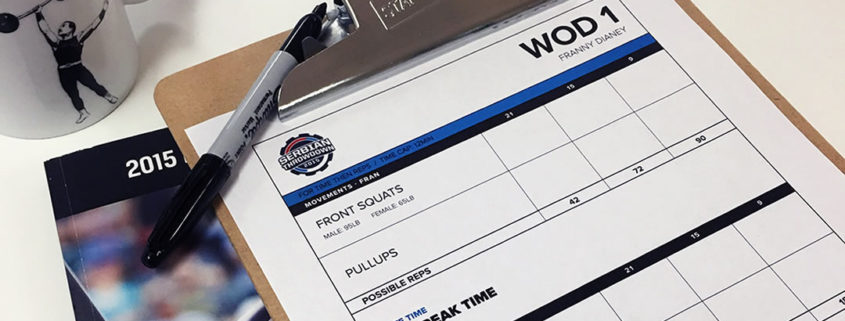TIPS & TRICKS: SCORE CARD DESIGN
Have you ever been a judge and, in the frenzy of a competition, lost track of movements, miscounted reps, or forgotten what the standards were for that particular WOD? Being a judge at many local and larger events I have seen my fair share of different styles of scorecards, and poorly written scorecards can cause disasters during an event. Unfortunately, mistakes happen, but having a well-designed scorecard is key to a successful event.
Three key points to keep in mind when creating your scorecards:
- KEEP IT CLEAN!
I have seen some very well laid out scorecards, but I have also seen jumbled messes that leave room for error.There are three basic rules to a simple and clean design:
a. Use a table to keep track of reps completed
b. Have ample space for the judge to make notes or tick/tally marks
c. Keep explanations of movement standards brief and concise
The best part of using a table is that it gives you the advantage of ordering your movements according to rep scheme, movement style, or type of rounds. You want your judge to be able to easily keep track of their athlete or team as efficiently as possible. - SIZE DOES MATTER!
Having a scorecard that is too small may not be enough room for judges to take notes; however, having too much information can overwhelm the judge. Each of the judges should be well briefed on the WODs, standards, movements, reps, and weights before the event, so he can answer the athlete’s questions. The information on the scorecards should only be what is necessary. - PERSONALIZE THAT MUG!
By simply including The Box’s logo, colors, and sponsors, you can really make the scorecards unique. Having enough contrast between movements or sections in your table will assist the judges in working through the event.
For Example:
You are doing two mini WODs within one workout. For the sake of wanting to torture your competitors, the workout will be Fran and Diane within a 12 min. time cap, and the event is going to be scored for time then reps for whichever reps are not completed in the 12 min. time cap.
After Fran is completed, you would give space for a tie break time and create another table, like the Fran boxes, to include two rows for the deadlifts and handstand pushups and three columns for the reps (21-15-9) and the last row to include all reps completed so far. Once you have all the rows created in the last section of the scorecard, you would include any instructions needed for the judge to review, the name of the athlete/team, the division, signature of athlete and judge, and a space for the final score.
See… not that hard, eh? Now get your creative juices flowing and start making scorecards that will not only aid your judges but your staff for the entire event!
Happy WODing!!!




